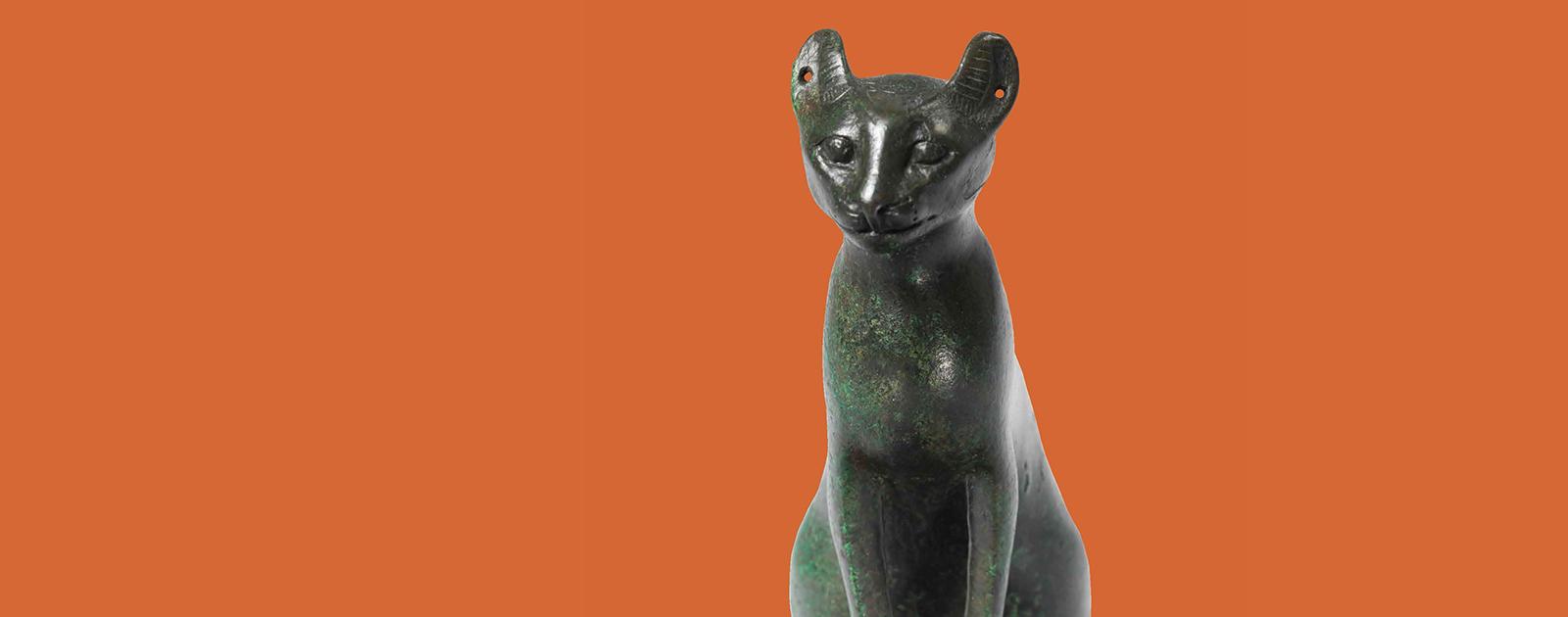From domesticated pets to mythic symbols of divinities, felines played an important role in ancient Egypt for thousands of years. The Carlos Museum presents Divine Felines: Cats of Ancient Egypt, an exhibition featuring cats and lions (and even dogs and jackals) in ancient Egyptian mythology, kingship, and everyday life. Drawn from collections of the Brooklyn Museum and the Carlos Museum, the exhibition showcases more than 90 objects exploring wild and domestic cats and dogs, feline and canine deities, animal burial practices, and luxury items decorated with feline and canine features.
Divine Felines examines the duality of feline nature with objects such as the large limestone sculpture of a recumbent lion (305–30 BC), a diminutive bronze sphinx of King Sheshenq (945–718 BC), a cast-bronze figurine of a cat nursing four kittens (664–30 BC), and cat-shaped wooden coffins for cat mummies (664–332 BC). Also included are images of feline deities, amulets, and luxury items decorated with feline features, and a small section of the exhibition looks at the role of dogs and jackals in ancient Egypt.





